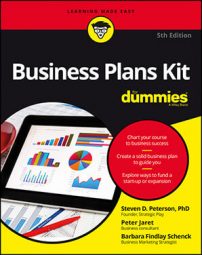Even if you’re launching a one-person business located for the time being at the kitchen table, you still need to project the time it takes to sign the first client and cash the first check — and then the next one. While you’re waiting for revenue to take off, you’ll be burning through cash reserves to fund business expenses.
To estimate the funding requirement your business faces, take these steps:- Create a realistic forecast of your financial situation. Follow the steps for preparing a pro forma or estimated statement of income, expenses, and profit, along with an estimated balance sheet and cash flow statement.
- Estimate your funding need. Use your financial forecasts, and especially your cash flow projection, to determine how long you anticipate expenses to exceed revenue and by how much. Doing so helps you get a handle on when you expect expenses to be incurred, when you expect revenues to roll in, and the amount of funding you need in order to cover the gap.
- Create a funding time frame. After you establish how much funding you need, create a schedule for how long you need the funding to last before your business needs to become self-sufficient. This schedule, called your time frame, should include dates by which you plan to meet revenue-generating milestones — for example, first customer, first major contract, first $10,000 in sales, and so on — that you can monitor as indicators that your business is on track to achieve profitability before funding runs out.
- Runway: The amount of time funding needs to last before your business becomes profitable and self-sufficient or until additional funding will be required
- Burn rate: The speed with which you expect to spend the funding you’ve raised — in practical terms, the amount of cash required each month to cover the costs of staying in business

